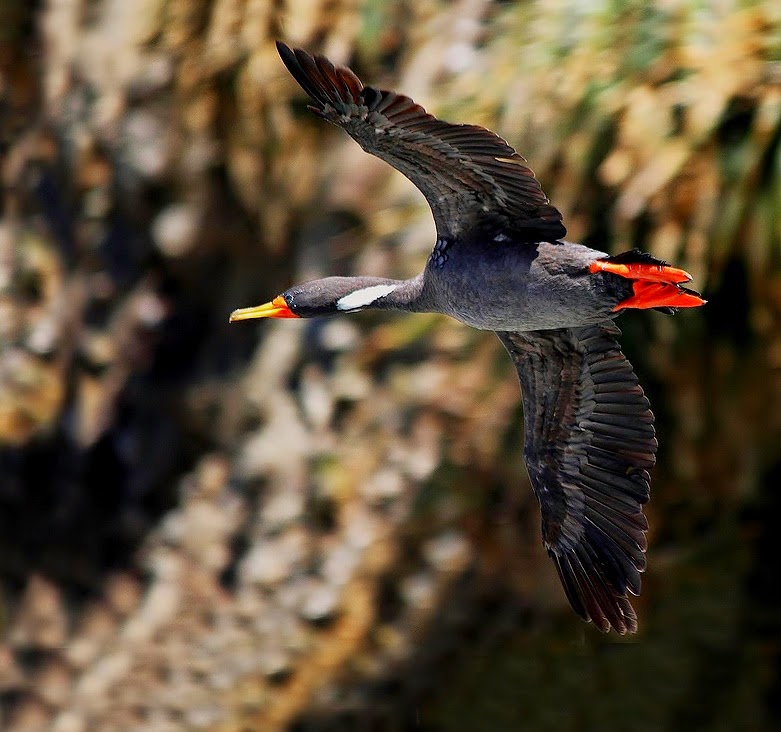 |
| Photo by Jose Cañas (Flickr) |
Common name:
red-legged cormorant (en); corvo-marinho-de-patas-vermelhas (pt); cormoran de Gaimard (fr); cormorán chuita (es); buntscharbe (de)
Taxonomy:
Order Pelecaniformes
Family Phalacrocoracidae
Range:
This species is found along the Pacific coast of South America, from Isla Foca, in northern Peru, to Peninsula de Taitao, in southern Chile, and also in the Atlantic coast of southern Argentina from Bahia Sanguinetto to the Monte León National Park.
Size:
These birds are 71-76 cm long and have a wingspan of about 90 cm. They weigh 1,2-1,8 kg.
Habitat:
The red-legged cormorant is found in rocky coastlines, nesting in inaccessible cliffs, sea caves and rocky islets, and foraging over shallow coastal waters, usually within 3 km of the breeding colonies.
Diet:
They feed mainly on fish, including Patagonotothen spp., sardines Sprattus fuegensis, Ramnogaster arcuata, eels and anchovies. They also take various marine invertebrates such as bivalves, squids, polychaete worms and crabs.
Breeding:
Red-legged cormorants can breed all year round, varying among different parts of their range. They are monogamous and the nest is a mound of seaweeds, guano and feathers placed in a narrow ledge on a cliff. There the female lays 2-4 white eggs which are incubated for about 30 days. The chicks fledge 60-70 days after hatching.
Conservation:
IUCN status – NT (Near-Threatened)
This species has a large breeding range and the global population is estimated at 30.000 individuals. The population is believed to have declined by 20-30%, mainly due to entanglement is fishing equipment, low food availability caused by over-fishing, and the effects of El Niño events. The expansion of industrial fishing is favourable for its main predator, the kelp gull Larus dominicanus which is known to heavily impact breeding success. Peru, Chile and Argentina have plans to improve their coastal marine protected areas network which could help the red-legged cormorant populations.







